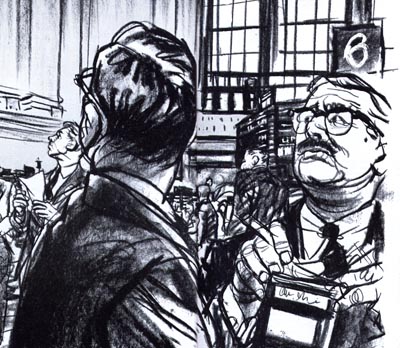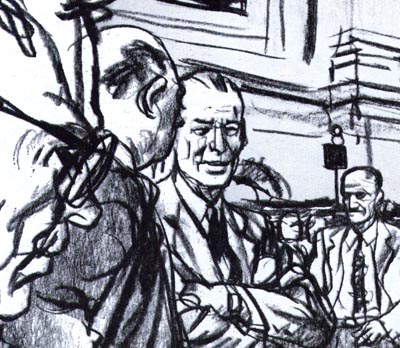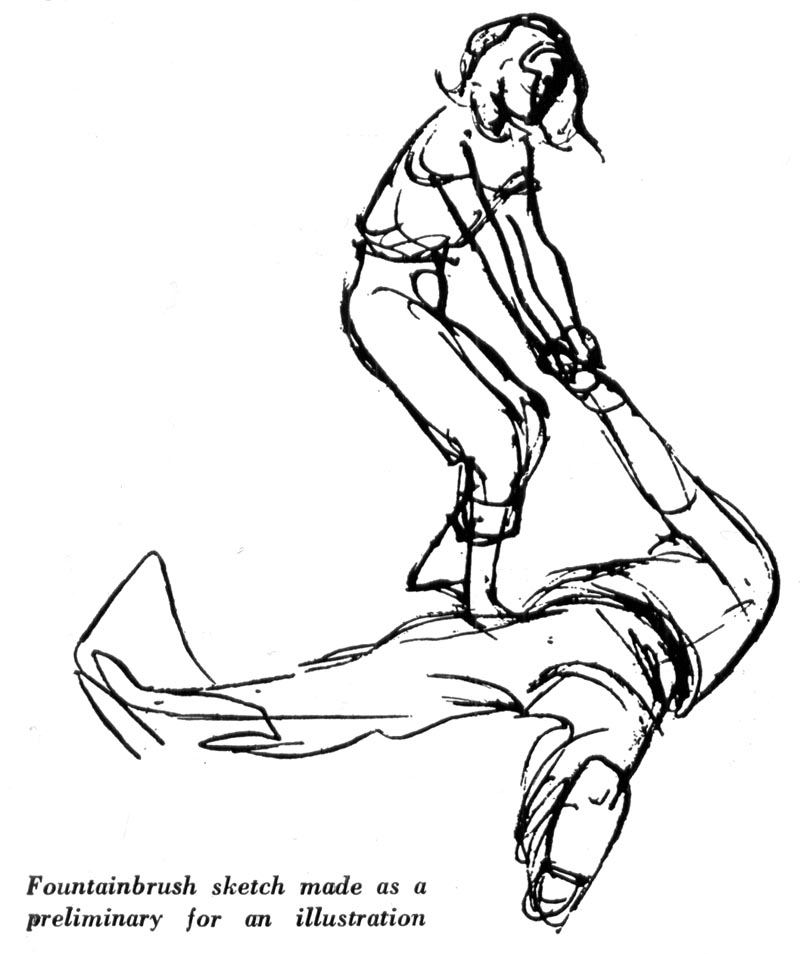
Austin Briggs is up in the first ranks of the illustration army. He didn't arrive with any dazzling rain of fireworks; his technique is not spectacular; he has no particular tricks of display, but his fellow illustrators look at his pictures with great respect and predict a steady expansion of his abilities.

And the reading public has a solid regard for his work, a regard that is not an overnight enthusiasm but one that has grown slowly but with certainty over a span of years.

Behind the Briggs pictures are more than two decades of hard work and constant striving for improvement. They are the result of much patient building and some rebuilding. They sum up a long accumulation of experience, a gradual sharpening of technique and a dogged pursuit of self. Briggs spent a good many years looking for himself and, once the search was rewarded, he became the illustrator we know today.

He was in the big magazines as far back as 1927, but he was not certain of his own viewpoint. He thought too little of his own personal approach and too much of other personalities in the field.

The discovery of self took time, but the story of it carries a message to those who are embarked on the same search.

Excerpted from the October 1950 issue of American Artist magazine, written by Henry C. Pitz
* My Austin Briggs Flickr set.
This is going to be a good week.
ReplyDeleteThanks Lief
Beautiful drawing.
ReplyDelete"He thought too little of his own personal approach and too much of other personalities in the field" ... does that ever ring a loud bell in my head !!
ReplyDeleteWhen I was an illustration student in 1958, Austin Briggs was the man with the gorgeous free flowing spontaneous line. Our illustration teacher would point out the beauty and artistic flair of his sumptuous line drawings. Briggs and Fawcett were the guys to look at and learn from, especially when it came to their line work. In those early days of illustration study, I didn't know much about projection drawing, I thought Briggs just drew directly from models or copied photos, and when I tried that spontaneous line technique directly on illustration board, I couldn't figure out how to correct my mistakes... which there were plenty. I tried drawing it very lightly first on illustration board in graphite pencil, then draw over the top of that with charcoal pencil, but that was a disaster. Then, I tried whiting out my mistakes and drawing back over the white paint, and that was even worse. Finally I came up with the idea of drawing it on a transparent layout pad with a tooth, using a preliminary drawing slipped underneath, and then cutting and inserting corrections where needed... but I would have to make a photostat of it, so it wouldn't show all the distracting patches! I could never show the original drawing as the finish. It was a lame solution for sure, but the best I could do at the time.
I was in awe as to how Briggs made it look so easy with NO MISTAKES! I could look at those Austin Briggs line drawings for hours, hoping to obsorb some of it. Just one of many idle worshiping introductions to the field of illustration, for an impressionable young student. Finding MY illustration direction was NOT easy, but inspiration can do wonders.
Tom Watson
ooo!
ReplyDeletetom's comment is great too, trying to reverse-engineer the lines is quite interesting to do.
I have taken the liberty of nominating your blog for a Premio Dardos Award, given for recognition of cultural, ethical, literary, and personal values transmitted in the form of creative and original writing. I had to choose the five blogs that I most admire and yours was one. Please pass it on if you can. Best wishes, Phil.
ReplyDeletePhil;
ReplyDeleteWow, how incredibly thoughtful! Thank you - I had no idea such a thing exists.
That's a well deserved nomination!!!! How do people vote, because Leif gets MINE!
ReplyDelete